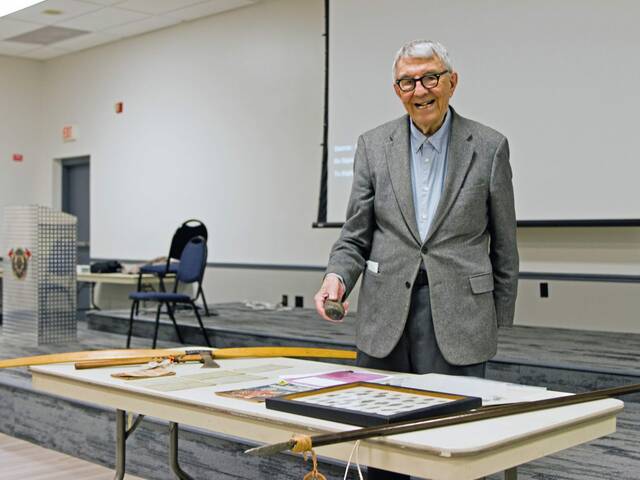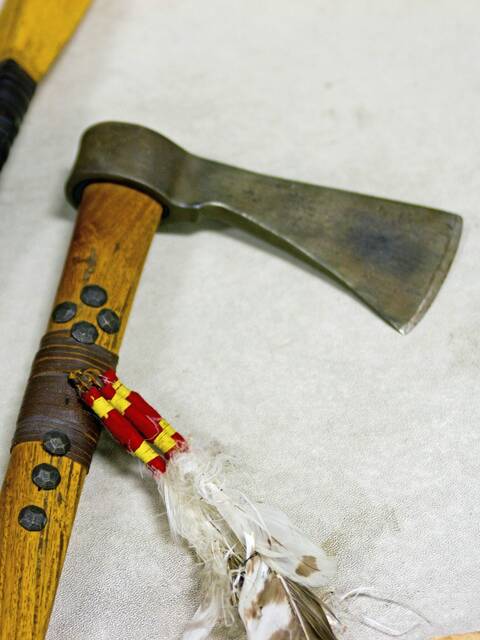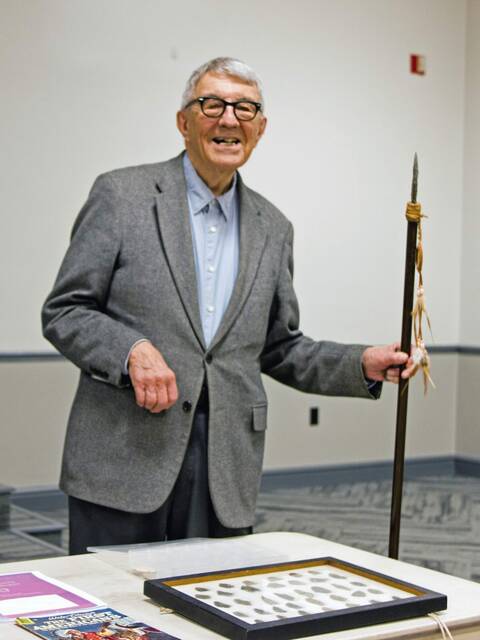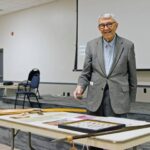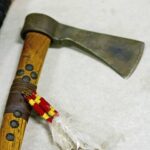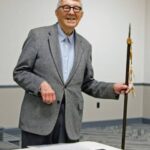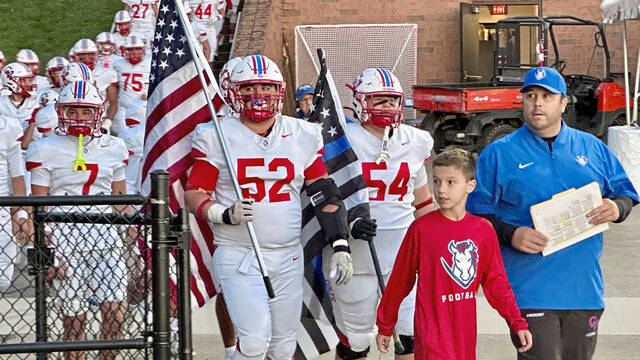Under what now is Interstate 79 as it passes through the westernmost part of Bridgeville, a settlement flourished nearly a millennium ago.
Historian John Oyler remembers some related local folklore.
“Anybody my age who grew up in Bridgeville heard about the Indian mound on Gould City Hill all their lives,” he said. “And we knew that there was a large mound, and that somebody had dug it up and taken away a large amount of artifacts. That’s all we knew.”
In subsequent decades, archaeological excavations and studies of the findings led to a clearer picture of what once was located next to Chartiers Creek, across the water from today’s Top Golf in South Fayette.
Oyler, 92, provided enlightenment with “Bridgeville in 1223 A.D.: the Monongahela Peoples,” his Nov. 28 program for the Bridgeville Area Historical Society. The designation of “Monongahela” was coined retroactively for inhabitants of the era in southwestern Pennsylvania, named after the river.
As it turns out, the artifacts Oyler heard about in his youth may have belonged to folks whose descendants are members of the Osage Nation, the subject of the Martin Scorsese film “Killers of the Flower Moon.”
Oyler cited research by the late archaeologist Richard George, a leading figure in reconstructing the pre-Columbian past of the Upper Ohio Valley.
“Somehow he learned that in the Midwest, there were Sioux-speaking people whose oral tradition, the stories they handed down from generation to generation, included very accurate descriptions of Western Pennsylvania,” Oyler said.
Local excavations
In Bridgeville, attempts to research past inhabitants go back at least to 1902, when a team from the Carnegie Institute, forerunner of the Carnegie Museums of Pittsburgh, conducted a dig.
“The bad news is this was well before the time when archaeological excavations were well-organized, and whatever they dug up, nobody knows where it went,” Oyler explained. “It was never documented, never archived, and it just disappears.”
A similar project took place half a century later on the Drew family farm in Bridgeville, with the findings property documented, catalogued and stored by archaeologist William Buker.
His dig provided a time frame for when the area was inhabited and uncovered items such as tools made from deer bone, cups from turtle shells, clay pipes, stone projectile points and 23,334 pieces of broken pottery that was made in a distinctive manner.
“Their pottery was shell-tempered,” Oyler said. “Everywhere else in the Native American world, they used ground limestone. But for some reason, the Drew Site people ground up freshwater mussels.”
The nearby waterway served their dietary needs, as well.
“Seems strange today, but we know that as recently as 1840, Chartiers Creek was described as being crystal-clear and full of fish and mussels,” Oyler reported. “Another characteristic of these people is the fact that they were good farmers. They had learned how to grow corn, beans and squash, the famous Indian ‘three sisters.’
“The bad news was that they didn’t understand crop rotation, and they had no fertilizer. So after a few years, the soil was worn out, and they had to move their garden to another spot,” he continued. “Typically, they could do that three or four times. And by then, they had exhausted the resources of the whole area where they lived, and they had to pick up and move.”
‘This is an entire tradition’
Buker used the term “Drew Phase” as a reference to the ostensible uniqueness of the people who lived at the Bridgeville site.
“George said it’s much bigger than that. This is an entire tradition,” Oyler said. “He then identified this family of sites located between the Ohio River, the Monongahela River and the Mason-Dixon Line, all of which have similar characteristics.”
Perhaps they all constitute what boils down to a single site, according to George.
“His theory was that this group of people started out somewhere on Chartiers Creek and established a village, and planted gardens and farms, and flourished and hunted and fished. And that after about 20 years, they had exhausted all the resources of that local area,” Oyler explained.
“Therefore, they had to move on, and they moved 20 miles away, and that what we’re seeing is merely a whole lot of successive locations of the same people. And perhaps after a hundred years, they came back and built their village back where it had been before.”
The Bridgeville Area Historical Society is hosting an exhibit dedicated to Native Americans through the end of December, featuring a display of artifacts. The society’s museum, at 441 Station St., is open between 10 a.m. to 2 p.m. Tuesday, Thursday and Friday, and by appointment.
For more information, visit bridgevillehistory.org.


